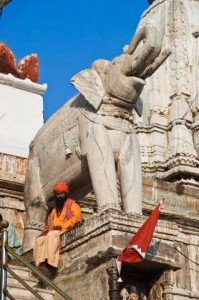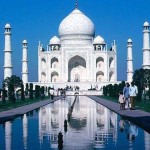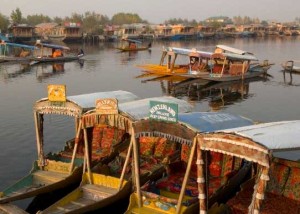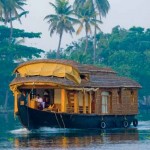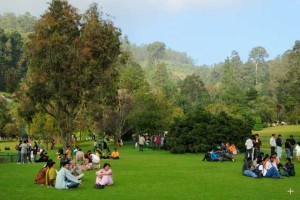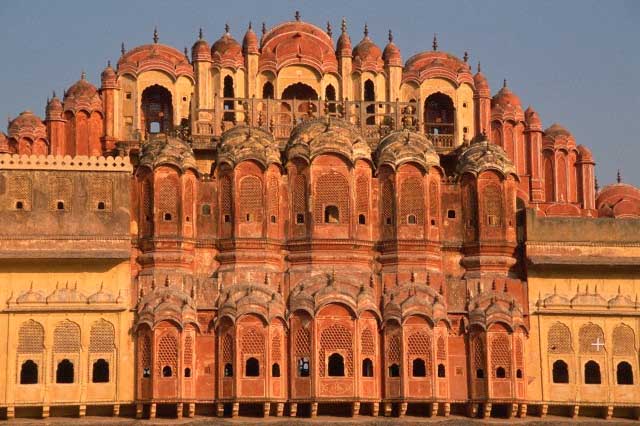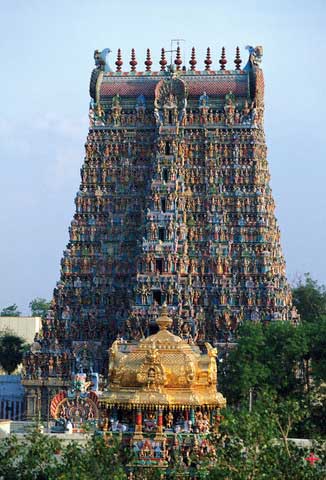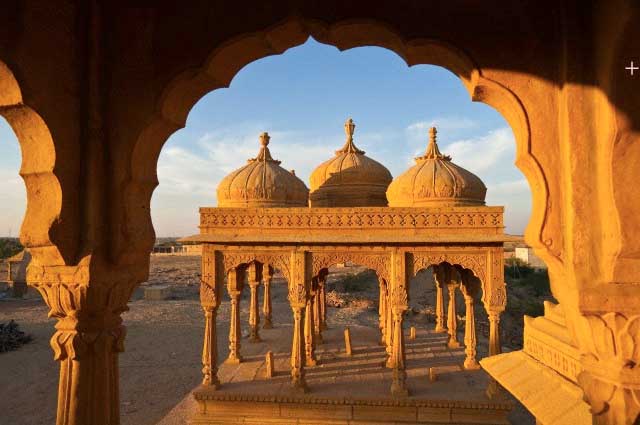India Holiday Packages » Hyderabad Tourism and Attractions
Hyderabad Tourism and Attractions
Andhra Pradesh, known as the “Rice Granary of India” is the favourable tourist state in India, which has a coastline of 1000 kms with eight of its 23 districts having direct access to the sea. Located in South India, Andhra Pradesh is bounded by Tamil Nadu in the south, Maharashtra in the North and North-West, Madhya Pradesh in the North-East, Karnataka in the West, and by the Bay of Bengal in the East. The medieval city of Hyderabad is its capital. The main languages that are spoken in Andhra are Telugu, English, Urdu, Hindi. Hyderabad Tourism Package, Tour To Hyderabad, Attractions in Hyderabad, Hyderabad Sightseeing, Hyderabad attractions, Hyderabad tour, Tourist Place in Hyderabad, Hyderabad Travel Agent, Hyderabad Travel
It uniquely combines history, beaches and mountains into a great travel destination. The state of Andhra Pradesh is recognized variously-for its legendary dynasties; for its most revered temple, Tirupati; for its beautiful language, Telugu; for its lacquer toys and beautiful weaves; rich literature and the vibrant Kuchipudi. The Places to see in Andhra Pradesh are Sri Venkateswara temple at Tirupati, Charminar, Salar Jung Museum, Golconda Fort in Hyderabad and Buddhist viharas at Nagarjunasagar. Andhra Pradesh had been an important seat of rich Buddhist heritage. Andhra Pradesh has also the largest IT park and largest Film City in Asia.
The climate is generally hot and humid. The summer temperatures vary from 20C to 40C, while in winter it is between 13C and 32C. The South-West monsoons play a major role in determining the climate of the state. The North-East monsoons are responsible for about one-third of the total rainfall in Andhra Pradesh. Best time to visit Andhra Pradesh is October to February.
Andhra Pradesh lies between 12o41′ and 22o longitude and 77o and 84o40′ latitude. It is bounded by Madhya Pradesh and Orissa in the north, the Bay of Bengal in the east, Tamil Nadu and Karnataka in the south and Maharashtra in the west. Andhra Pradesh is the fifth largest state in India and it forms the major link between the north and the south of India. It is the biggest and most populous state in the south of India.
There are three main regions in Andhra Pradesh – (1) Northern Circars or coastal Andhra comprising Srikakulam, Visakhapatnam, East Godavari, West Godavari, Krishna, Guntur, Ongole and Nellore districts; (2) Rayalaseema or Ceded districts comprising Kurnool, Cuddapah, Chittoor and Anantapur districts; and (3) Telangana comprising Khammam, Nalgonda, Warangal, Karimnagar, Medak, Nizamabad, Aadilabad, Mahbubnagar and Hyderabad districts. The Circars or Coastal districts are well developed and enjoy a greater degree of affluence than the other two regions; Rayalaseema is close to the coastal districts and here rainfall is less than in the coastal districts and drought conditions prevail sometimes, and the Telangana region is of the former princely state of Nizam’s Hyderabad, which is close to Maharashtra’s Marathwada region and some parts of Karnataka.
Climate of the state: Andhra Pradesh receives rainfall from the southwest monsoon as well as the northeast monsoon. The first begins in the second week of June and lasts till September while the second occurs in October-November. The state’s coastal areas receive heavy rains during the northeast monsoon and are also subject to cyclonic conditions, which cause enormous damage to residential accommodation and to standing crops. The rainfall decreases from north to south. The Nizamabad district in Telangana receives about 87.5 cm of rain while Anantpur in Rayalaseema receives only 31 cm. The state has a really hot summer but after the rains begin in the middle of June, there is a decline in the heat when humidity takes over. There is a mild winter in December but the temperature does not go down below 16o Celsius. While the southwest monsoon is comparatively heavy in the northern parts of the state, the northeast monsoon brings more rain to the southern areas like Rayalaseema. The hot season causes the mercury to rise to troublesome proportions in the months of April and May when it could shoot upto 40 degrees and more.
Historical Monuments
- Mecca Masjid – A Symbolic Mosque, Mecca Masjid was built 400 years back during the reign of Sultan Muhammad Qutub Shah, the 6th Qutub Shahi Sultan of Hyderabad. The three arched facades have been carved from a single piece of granite, which took five years to quarry. More than 8,000 workers were employed to build the mosque. Muhammed Qutub Shah personally laid the foundation stone of the ‘mosque’.
Jean-Baptiste Tavernier, the French explorer, in his travelogue observed, “It is about 50 years since they began to build a splendid pagoda in the town which will be the grandest in all India when it is completed. The size of the stone is the subject of special accomplishment, and that of a niche, which is its place for prayer, is an entire rock of such enormous size that they spent five years in quarrying it, and 500 to 600 men were employed continually on its work. It required still more time to roll it up on to conveyance by which they brought it to the pagoda; and they took 1400 oxen to draw it”
- Charminar – a major landmark of Hyderabad with four graceful minarets located in the old city. It is built by Muhammed Quli Qutb Shah as a memorial for plague victims. Charminar in most occasions is used to represent the city and the state and is hailed as a unique Deccan monument. It is in the midst of Charkaman which are four archaways leading to roads in all four directions of the Charminar monument
- Golconda Fort – Once abandoned by Qutub Shahis, Golconda Fort is one of the most magnificent fortress complexes in India. Seated on a hill on one side and spiraling fort on the other, its location and internal design made it one of the strongest forts in India.
- Qutb Shahi Tombs – Home to various Tombs dedicated to Rulers of Qutub Shahi dynasty, located at Shaikpet, near Golconda Fort. These are an example of Deccan architecture with large minarets, huge domes, delicate marble designs and multiple inner passages.
- Paigah Tombs – These are recently discovered series of mausoleums with unique geometrical sculptures which were no where found in the world. These are located at Chandrayanagutta. Paigahs were noblemen under the reign of Nizams.
- Paigah Mosque Spanish Mosque, Begumpet : This Mosque is one of the marvelous mosques present in Secunderabad/Hyderabad. It’s well known among the people because of its amazing architecture. The architecture followed in this mosque is the Andalusi/Spanish Architecture. The mosque was constructed by Sir Vicar-ul-Umra a Paigah Nawab in 1906.
Palaces
- Chowmahalla Palace – It was the seat of Asaf Jahi dynasty, where the Nizam entertained his official guests and royal visitors. Initiated in 1750 by Nizam Salabat Jung and designed along the lines of the Shah’s palace in Isfahan, this actually consists of a group of palaces each used as a Durbar Hall. It has now been aesthetically renovated and is also venue for conferences. These sentences were taken from the website
- Asman Garh Palace – It was designed personally and built by the erstwhile Prime Minister of Hyderabad state Sir Asman Jah in 1885 on a hillock for leisure. Its based on Gothic architecture and is in the shape of a European medieval castle. The palace presently hosts a museum displaying archaeological relics.
- Falaknuma Palace – Built by an Italian architect through one of the Paigah nobles, Nawab Viqar al-Umra complete in Italian marble. Louis XIV-style decor, a Mughal ambience, Italian marble staircases and ornate fountains. It has now been undertaken by Taj group to develop this as Heritage Hotel.
- Taramati Baradari – Taramati Baradari is a palace located near Gandipet lake, that was built under the reign of Abdullah Qutb Shah, the Seventh Sultan of Golkonda as an ode to his favorite courtesan, Taramati. The baradari with 12 doorways were to allow cross ventilation, considered to be the most ingenious technique at the time. Similar structures like Premavati and Bhagmati can be seen from here.
- Purani Haveli – It was the official residence of the Nizam’s parents.
- King Kothi Palace – The last Nizam, Mir Osman Ali Khan lived here.
- Bella Vista Bella Vista, Hyderabad is a royal palace of the Nizams built in the year 1910.
Drawing Room of the Bella Vista PalaceBella Vista is the Indo-European building standing on a 10-acre (40,000 m2) verdant campus. The building’s French architect christened it as Bella Vista, meaning beautiful sight, since it overlooks the Hussain sagar lake. It is located at Saifabad suburb. It was modeled on the Henley-on-Thames of England. Now ADMINISTRATIVE STAFF COLLEGE OF INDIA
Religious places
Charminar – Very few people know that it is mosque(masjid). It use to have a fountain on its roof, like Gulzar Houz down the street.
Makkah Masjid – a stone-built mosque, which lies immediate southwest of Charminar. Remarkable for its architecture, size and its royal splendor, this is one of the most beautiful mosques in Hyderabad. It is famous for its symmetry and the gateway bricks that are believed to be from Makkah.
Shahi Masjid Is one of the oldest mosque built by Nizam – I(Nizamul Mulk) which is a part of Public Garden. Very Beautiful building and very peaceful place.
- Ananda Buddha Vihara – It is a Buddhist tourist destination. Located at Mahendra Hills, it houses meditation hall, a museum and rest houses for monks etc.
- Birla Mandir – a Hindu temple made of white marble located on top of a hill overlooking the city.
- Sanghi Temple – A temple dedicated to Lord Venkateshwara graces a promontory overlooking Sanghi Nagar, near Ramoji Film City.
Museums and Planetarium
- Salar Jung Museum – The museum houses the largest one-man collection of antiques in the world. Collections includeThe Veiled Rebecca and other huge collection of artifacts dating back to a few centuries. A mere day isn’t enough to cover the whole museum. Apart from galleries, there is a reference Library, reading room, publication and education section, chemical conservation lab, sales counter, cafeteria etc.[8]
- AP State Archaeology Museum – This is an archeological museum located inside Public gardens.
- Birla Science Museum – The science centre is another beautiful structure, reflecting the advances made in science and technology. The interior décor matches the architectural exterior of the centre built over 10,000 sq ft (930 m2). The centre is host to a number of divisions such as the Planetarium, the Science Museum, and the centre for Applied Mathematics and Computer Sciences.
- Birla Planetarium – The Planetarium is another magnificent building with a big dome resembling that of the Gol Gumbaz in Bijapur and some of the earliest government structures in New Delhi. A special attraction are the shows which unveil the mysteries of the cosmos and the origins of the universe, comets, eclipses, unidentified flying objects and the clash of titans. The latest addition is the Dinosaurium, which houses a collection of dinosaur egg fossils. The highlight of the museum is a mounted Kotasaurus yamanpalliensis, the remains of a 160 million old dinosaur.
[flickr-gallery mode="search" tags="hyderabad" ]
Lakes of Hyderabad
- Osman Sagar – Osman sagar was created by dam constructed on the Musi River in 1920, for providing drinking water source for Hyderabad, and also for saving the city from floods, which the city witnessed in 1908. It was constructed during the reign of the last Nizam of Hyderabad, Osman Ali Khan, hence the name. It is a popular tourist destination, especially after the rainy season when the reservoir is full, and its parks, resorts, amusement park are a major attraction. This lake had served drinking water for Hyderabad city but due to increase in population it is now unable to provide sufficient water supply to Hyderabad and so it is now just used for public recreation.
- Durgam Cheruvu – Also called The Secret Lake, it is a peaceful boulevard near the bustling Madhapur.
- Himayat Sagar – It is the twin lake to Osman Sagar, Gandipet lake. It comes along the way on Outer Ring Road en route to airport which provides a beautiful view.
Statue of Buddha amid the Hussain Sagar Lake
- Hussain Sagar – It is a man-made lake famous for the 19-metre tall Buddha statue present in the middle of the lake.Located on its banks is Tank Bund which consists of beautiful gardens and statues of famous personalities. Boating and water sports are a regular feature at the lake.
- Shamirpet Lake – The lake is situated 24 km north of Secunderabad. Its distance from the city is an incentive for the weekend picnics. It offers a serene location. It attracts a lot of birds, hence a destination for bird watchers. There is also a deer park belonging to the state government near the lake.
- Rukn ud Daula Lake – The lake is named after Musa Khan, Nawab Rukn ud-Daula, The 10th Prime Minister (1765–1775) of The Nizam, Mir Akbar Ali Khan Sikander Jah, Asaf Jah III of Hyderabad Deccan.
- Mir Alam Tank – Located adjacent to Nehru Zoological Park on the Hyderabad-Bangalore Highway. It has provided drinking water to Hyderabad people for 125 years before the Osman Sagar and Himayat Sagar were built. Mir Alam laid the foundation for the tank on July 20, 1804, as a plaque still lying in a corner shows. It was completed in about two years on June 8, 1806.
- Saroornagar Lake – From the year of its creation in 1626 AD, the lake remained largely clean until 1956 when Hyderabad expanded. Spread over 99 acres (40 ha),
Parks and Gardens
- Nehru Zoological Park – This zoo is a natural habitat housing a large variety of animals, birds, nocturnal species, aquatic and amphibian species. Located close to this is the Mir Alam Sagar, which is proposed to be converted into an Aquarium along the lines of Sentosa, Singapore. Its unique feature is the 21 in-built masonry dams that are jewel shaped, which were built in 1804 by Henry Russle, a French engineer in British service.[
- NTR Gardens – This leisure spot is located beside the IMAX theatre. Situated on 36 acres (150,000 m2) of land adjoining the Hussain sagar, these gardens provide of entertainment and recreation to families and youth alike. It also houses a memorial of Late Shri N.T.Rama Rao, former Chief Minister. It is renowned for its creative design which includes tree-top restaurants and architecture.
- Indira Park – Indira Park is situated in the Lower Tank bund of Hyderabad city. Indira Park is the newly built park of Hyderabad. Indira Park is spread over 76 acres (310,000 m2) of lush green area and it lies alongside the Hussain Sagar.It is a pleasant entertainment park for not only the tourists but also the people residing near the Park.
- KBR National Park – A sanctuary for Peacocks and Anteaters along with many other species including Monkeys and Snakes, the sanctuary is the green spot of the richest area of the city, Jubilee Hills.
- Kotla Vijayabhaskara Reddy Botanical Gardens – These gardens located at Kondapur are spread across a sprawling area of 130 acres (0.53 km2), housing different varieties of herbs, plants, trees etc. These gardens provide a complete visual treat to the eyes with water bodies, meadows and rich grasslands – nature at its best. Night Safari Park is adjacent to this.
- Lumbini Park – Lumbini Park is a small public, urban park of 7.5 acres (0.030 km2; 0.0117 sq mi) adjacent to Hussain Sagar lake in the busy Necklace Road area and is one of the popular parks in the city. It is being maintained by Buddha Purnima Project Authority since 2000. The main attractions of this park are the boat rides take you across the lake to give you a closer glimpse of the Buddha statue of Hussain sagar lake and 1500 seater Laserium, the first of its kind in the state. One of the major terrorist acts took place here on 25 August 2007 in which 44 people were killed.
- Lotus Pond – A beautiful garden built around a pond situated in Jubilee Hills, said to have been designed by an Italian designer. This garden is currently maintained by the Municipal Corporation. It is also home to a few rare species of birds.
- Mahavir Harina Vanasthali National Park – Located near Vanasthalipuram, previously it is a hunting (shikari) spot for Nizams it is now a picnic spot for the city people. Nischalvan Eco-tourism project is located here.
- Mrugavani National Park – A sanctuary for deer and leopards, it is located en route to Chilkur. The Outer Ring Road passes over (flyover) through this national park which is a thrilling experience.
- Public Gardens – Located adjacent to the Lal Bahadur Shastri Stadium, the gardens host the Horticulture department of Andhra Pradesh, the state museum of history and archeology and a sprawling park. Beside this is the Lalithakala Thoranam, which is a venue for various cultural activities.

